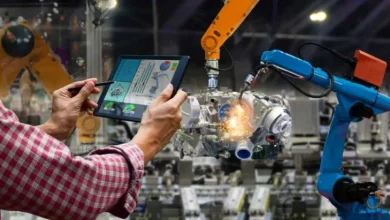Food Delivery App Development Cost for 2023

The rise in popularity of food delivery apps over the past few years has completely changed how customers purchase and get their favourite meals. These apps are becoming a necessary component of the food industry thanks to their comfort and convenience. However, it’s critical to comprehend the aspects that affect the development cost if you intend to create a meal delivery app in 2023. This tutorial will offer useful insights into the costs and factors involved in developing food delivery apps.
Apps for food delivery are essential
The food sector has changed forever thanks to food delivery applications. They allow clients to place meal orders from a variety of eateries, and have it delivered right to their door. The user interface of these apps is flawless, and they include simple payment methods, real-time order tracking, and tailored recommendations. Food delivery applications help establishments increase their customer base and generate additional cash. It makes sense to invest in a meal delivery app given the rising demand for these services.
Costs Affecting the Development of Food Delivery Apps
Technology Stack for the Development of Food Delivery Apps
Your food delivery app’s success depends on selecting the appropriate technology stack. Depending on the frameworks, programming languages, and databases you select, the development cost may change. A seamless user experience and effective app performance will be ensured by using reliable and scalable technology.
Possibilities and functionality
The complexity and quantity of features included in your app have a big impact on the cost of development. User registration, menu browsing, order placement, payment gateway integration, real-time tracking, ratings, and reviews are all essential elements. Advanced features like loyalty programs, in-app chat support, and social network integration can increase user engagement but may raise the cost of development.
User Experience and User Interface
To draw and keep app users, an interface must be both aesthetically pleasing and easy to use. The total development cost will be reduced by investing in a well-designed user interface (UI) and improving the user experience (UX).
Reverse Engineering
Your food delivery software must have a strong backend architecture, which should include servers, databases, APIs, and cloud storage. The cost of development is influenced by the backend architecture’s complexity and the need for scalability.
Integrations With Third Parties
The functionality of your app can be improved by integrating third-party services like payment gateways, mapping and location services, SMS and push notification providers, and analytics tools. However, each integration has related costs, therefore it is important to think carefully to prevent wasting money.
Considerations for Privacy and Security
Apps that deliver food handle sensitive user data, such as payment and personal information. It is essential to take strong security precautions and to adhere to data privacy laws. Strong encryption, secure authentication, and frequent security audits may raise the cost of development, but they are necessary for user confidence and data security.
Tests and Quality Control
To deliver a dependable, bug-free food delivery app, thorough testing and quality assurance are essential. It is important to include the cost of testing in the entire development budget, including functional, performance, and user acceptance testing.
Preservation and Assistance
The smooth running of your meal delivery app depends on constant support and maintenance. The whole cost of owning and maintaining the app includes updates, bug patches, server maintenance, and customer support.
When Hiring a Food Delivery App Development Company, Take These Things into Account
To ensure a fruitful cooperation and affordable development, take into account the following considerations when selecting a food delivery app development company:
- knowledge of developing food delivery apps
- Portfolio and customer endorsements
- Technical know-how and competence in pertinent technologies
- Approach to project management and routes for communication
- Pricing policies and openness
- post-launch assistance and upkeep services
How to Lower the Cost of Developing a Food Delivery App
MVP, or Minimum Viable Product
Create a minimum viable product first, including all the necessary components. This strategy enables you to swiftly release the software, receive user input, and iterate in response to market demand. You can cut the cost of initial development by concentrating on the essential features.
Evolutionary Development
Adopt a staged approach to on demand app development called iterative development, where features are built and released over time. This enables ongoing development, cost-cutting, and adaptability in meeting user needs.
Merchandise-Based Solutions
For non-essential elements of your software, take into account employing pre-built modules or ready-made solutions. By utilizing existing functionality rather than creating everything from scratch, you can reduce development time and costs.
Optimize the allocation of resources
To reduce costs, handle development resources carefully. To ensure effective time and cost management, allocate resources based on the project timeframe and give priority to important tasks.
Freelancers and outsourcing
Consider hiring freelancers for particular talents or outsourcing certain development activities. When compared to hiring a whole in-house development staff, this may result in cost savings.
Case Studies of Lucrative Apps for Food Delivery
Include case studies of effective food delivery applications and emphasize their distinctive strategies, cost-saving measures, and user-acquisition techniques.
Conclusion
Businesses hoping to capitalize on the expanding industry in 2023 have a ton of opportunity with the development of meal delivery apps. You can create a successful and cost-effective app by comprehending the aspects affecting development costs and putting cost optimization tactics into practice. You can develop a compelling food delivery app that entices users and generates income by putting an emphasis on the appropriate technological stack, necessary functionality, user experience, security, and maintenance.



